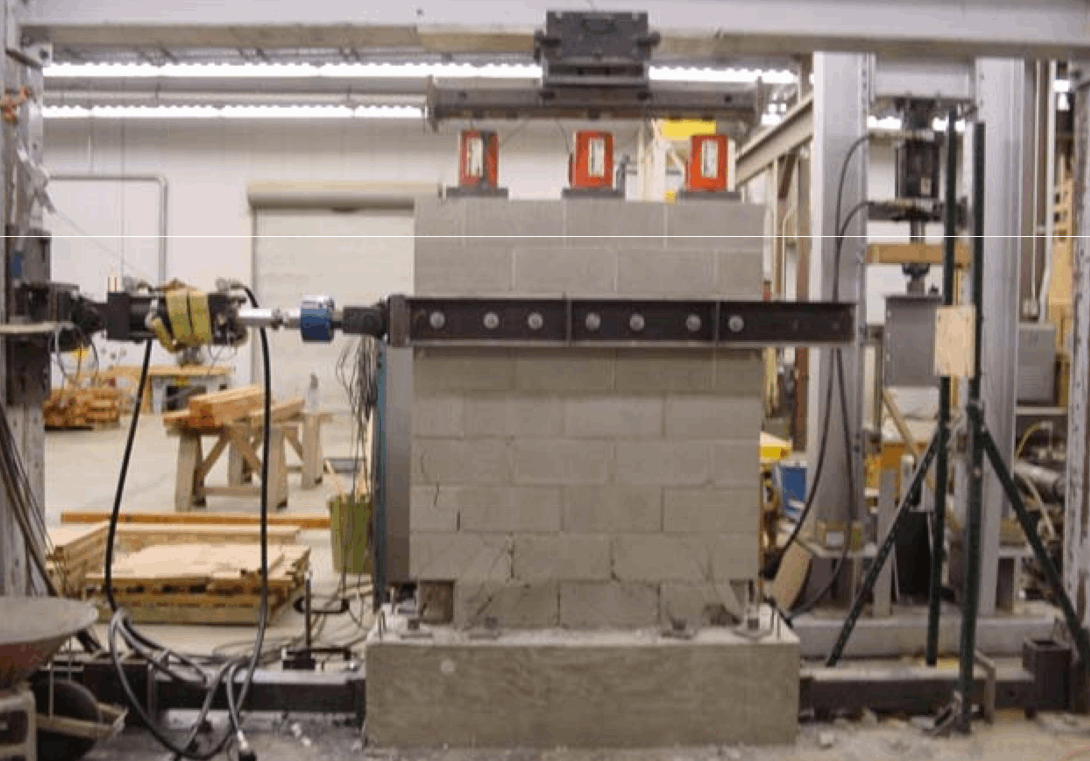Matthew Snook1, David McLean2, Cole McDaniel3 and David Pollock4
- Graduate Student,
- Professor,
- Assistant Professor,
- Associate Professor Department of Civil and Environmental Engineering Washington State University, Pullman, WA 99164-2910 USA
ABSTRACT
The research presented in this paper investigates the behavior of relatively heavily reinforced concrete masonry shear walls incorporating three types of confinement reinforcement, consisting of steel confinement plates or seismic reinforcement combs placed in the mortar joints or the use of polymer fibers mixed into the grout. The shear walls were tested as cantilever specimens subjected to cyclic lateral displacements under a constant axial load to represent seismic loading. The behavior of each wall specimen was evaluated with respect to failure mode, masonry and steel strains at failure, force displacement relationships, ductility, and the rate of strength degradation after maximum lateral loading. Test results show that all three confinement techniques moderately improve drift capacity and energy absorption. The addition of fibers in the grout provided the greatest improvement in performance.
KEY WORDS: shear walls, seismic, confinement, ductility
7b-3



